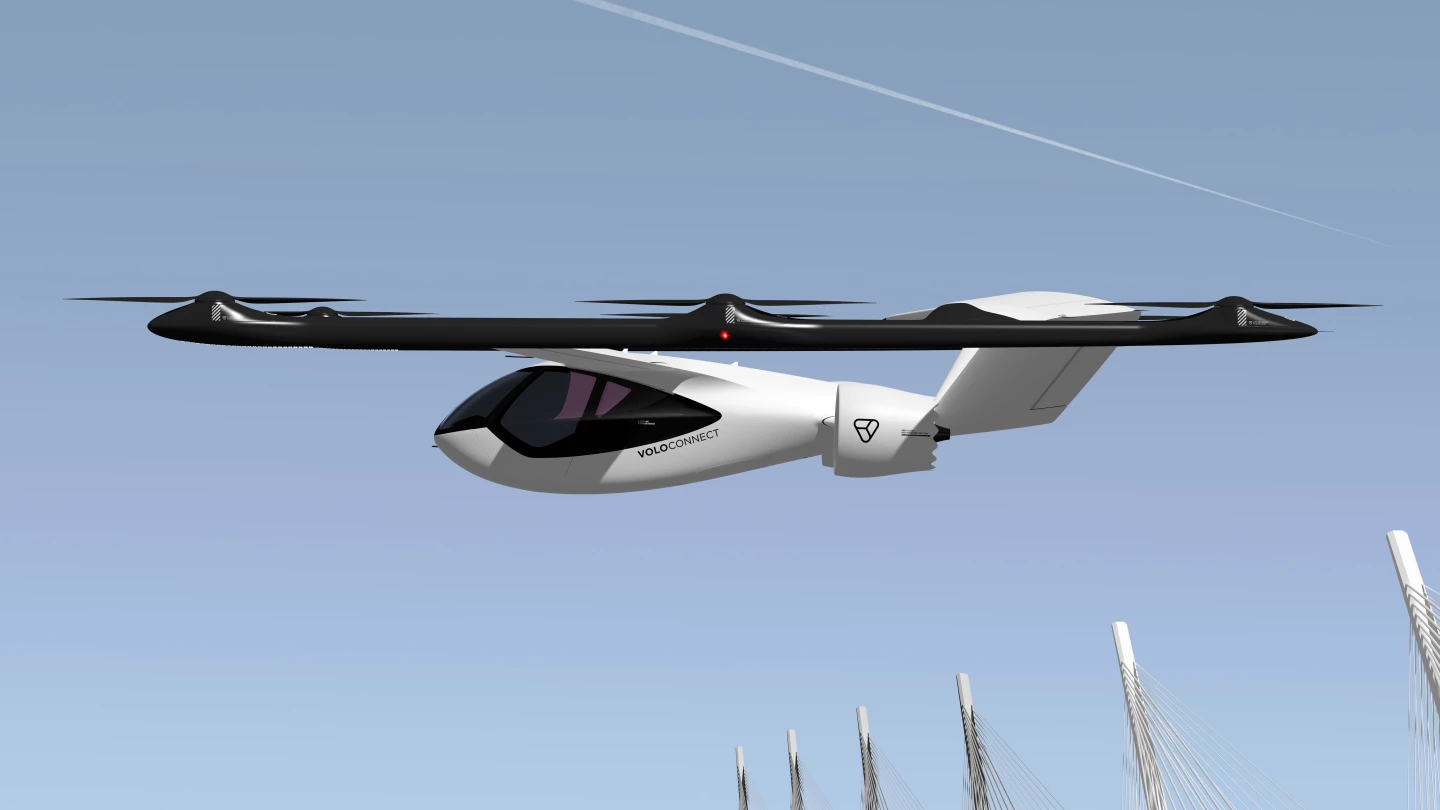Volocopter has added to its suite of futuristic air taxis with a fixed-wing version designed to carry more people across greater distances. The newly unveiled VoloConnect is designed to complement the company's existing aircraft built for travel around busy urban centers, by lifting folks away from the hustle and bustle and out to the suburbs.
Since entering the flying taxi scene back in 2013, Volocopter has introduced a few different iterations of its all-electric aircraft, incrementally refining the design to make it more aerodynamic, more stable and more powerful.
Its eVTOL (electric vertical takeoff and landing) aircraft known as VoloCity is built to carry two people between stations known as VoloPorts spaced around 30 km (18 miles) apart, with autonomous navigation systems handling the entire flight. The company has also designed a heavy-lift drone for carrying cargo weighing as much as 200 kg (440 lb), and even adapted the technology to build a crop-spraying drone for John Deere.
The new VoloConnect is a bit of a departure from the design of these previous aircraft, most notably through a hybrid "lift and push" system it uses to travel through the air. Where the other Volocopter aircraft has functioned essentially as a giant drone, the VoloConnect uses horizontal rotors to lift itself up into the air and adjust its altitude, and then a pair of propulsive fans kick in to send itself forward.

The four-seat VoloConnect can travel up to 100 km (62 miles) on each charge of its batteries and, with retractable landing gear, has a maximum cruise speed of 250 km/h (155 mph). The company says the aircraft has been in the works for around two years and it has tested scale prototypes and is "quickly progressing" towards testing of full-scale versions.
The design is also a little different to what we've seen from a number of notable players in the eVTOL scene that use tilting mechanisms to switch between vertical and horizontal modes of flight, such as Joby Aviation and Lilium. This is known as vectored thrust and promises greater performance, with Joby's aircraft capable of covering up to 240 km (150 miles) on each charge. The downside of vectored thrust, however, is likely a trickier path to certification, as Mike Hirschberg, executive director of the Vertical Flight Society, explains.
"Vectored thrust is the most complex and highest performance," he tells New Atlas. "Complexity equals more cost performance and schedule risk, but higher payoff."
The VoloConnect bears a stronger resemblance to Archer Aviation's eVTOL, which uses separate rotors for vertical lift and forward momentum, and also happens to have around the same range.
“We are confident that this aircraft family, and the years of experience and leading innovation on which it’s founded, will pioneer the way for electric UAM (urban air mobility) services to launch commercially and internationally," says Florian Reuter, Volocopter CEO.
The company expects to achieve certification of the VoloConnect within five years.
Source: Voloctopter






